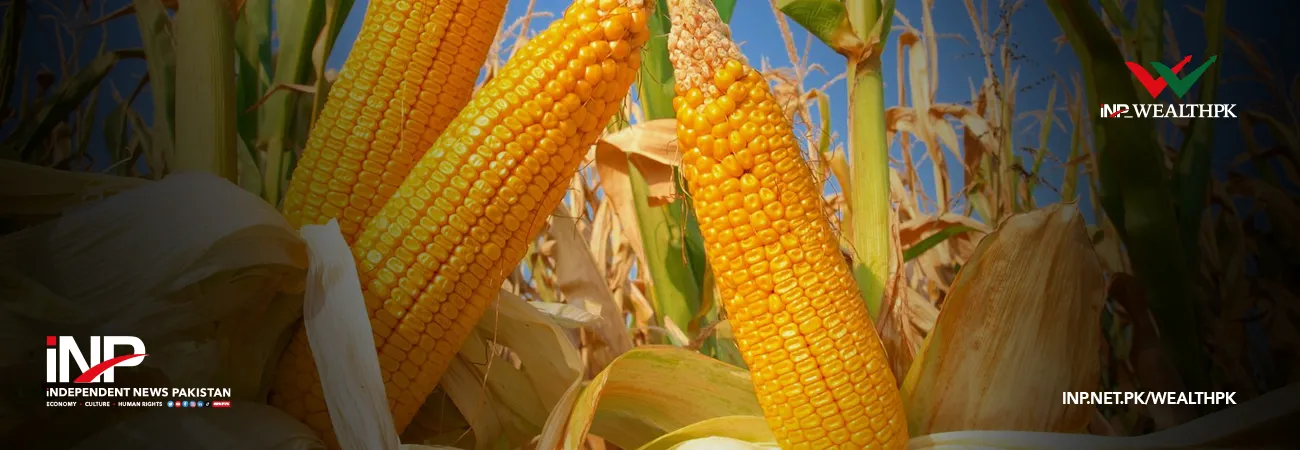INP-WealthPk
Arooj Zulfiqar
The global maize market has witnessed a steady growth over the past few years, offering a golden opportunity for Pakistan to not only meet its domestic requirements but also emerge as a reliable international maize exporter, reports WealthPK. According to the Economic Survey of Pakistan, maize contributes 3.0 percent of the value added in agriculture and 0.7 percent to the GDP. During 2022-23, maize was cultivated on 1,720 thousand hectares, showing an increase of 4.1 percent over the last year’s 1,653 thousand hectares. However, its production increased by 6.9 percent to 10.183 million tonnes from 9.525 million tonnes last year. As such, the increase in production was mainly due to increase in the area sown and improved yield.
Area, production & yield of maize (Area: 000 Hectare; Production: 000 Tonnes; Yield: Kg/Ha)

“The trend of growing corn exports from Pakistan presents a promising outlook for its role in the global maize market. As Pakistan continues to increase its corn production, it is poised to become an even more significant player in the global corn trade,” said Zubair Ahmed, a scientific officer at the National Agricultural Research Centre (NARC). “In the marketing year 2023/24, Pakistan's corn exports are projected to reach 400,000 tons, marking a significant contribution to the global maize trade. This increase in exports is primarily driven by the growing output and the resulting exportable surplus,” he said. “Maize grows quickly and has the capacity to yield a lot of grains per unit area.
This could help poor rural farmers improve their standard of living and escape poverty,” he said. “One of the key advantages Pakistan holds in the maize export market is its cost-effective production. The comparatively lower labour and production costs make the Pakistani maize highly competitive in the international markets. Moreover, the geographical location of Pakistan allows for efficient transportation routes to various global destinations, further enhancing its export potential,” he said. “It is mainly produced in KP and Punjab although traditionally non-maize-growing provinces like Sindh and Balochistan have seen a surge in production in recent years due to the private sector and development initiatives.
These two places can be explored for the development of future maize because they include substantial tracts of unused lands,” he said. “While the potential for maize exports is vast, there are challenges to overcome. Ensuring consistent quality standards, complying with international regulations, and investing in post-harvest infrastructure are essential steps for becoming a reliable maize exporter. Additionally, promoting research and development efforts to create value-added maize products can further enhance the country's competitiveness in the global market,” said the NARC scientific officer.
Credit: INP-WealthPk













